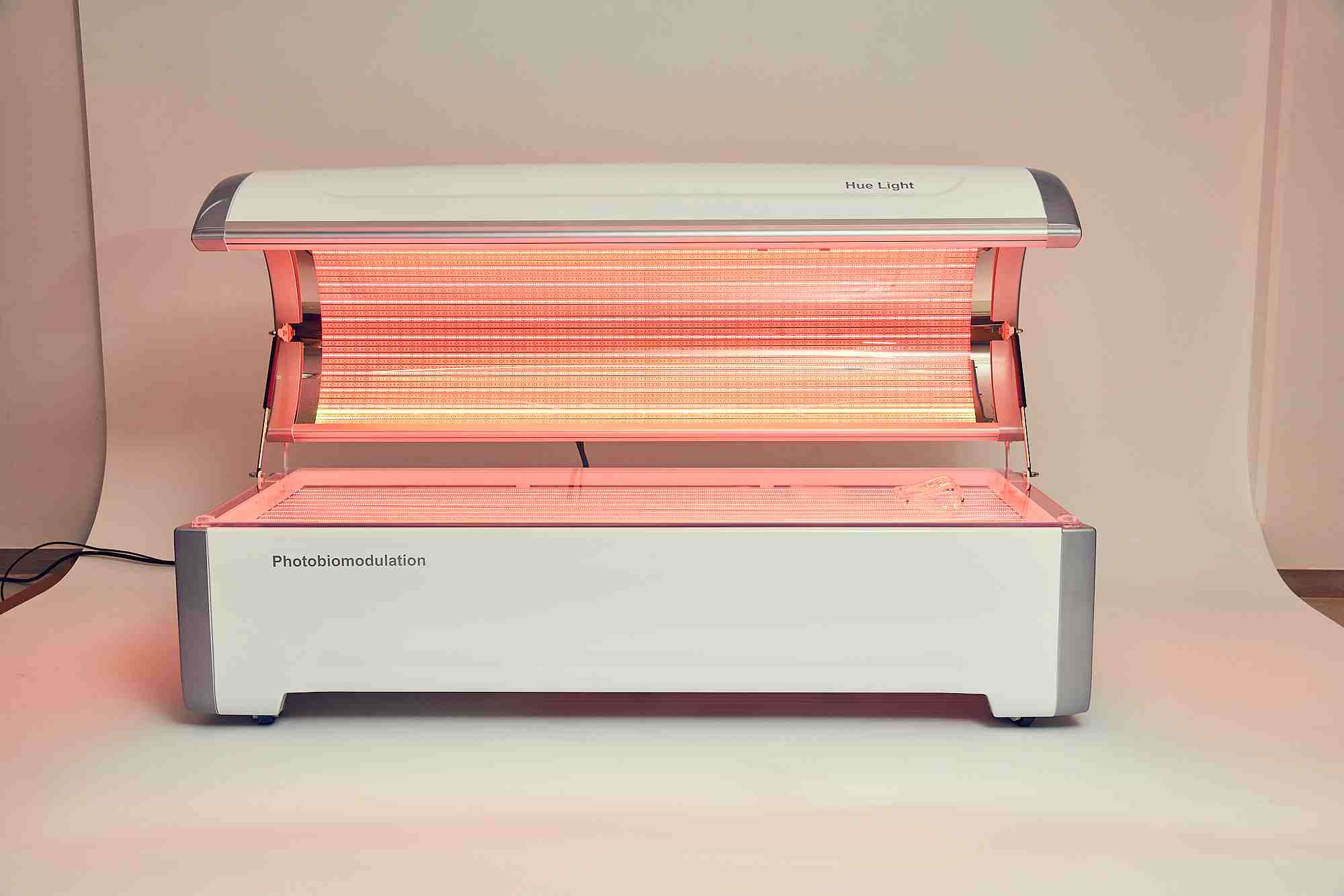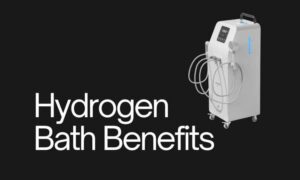Oxidative stress might sound like a complex scientific term, but it’s something that impacts all of us. Simply put, it’s an imbalance between free radicals and antioxidants in the body. When this balance is disrupted, it can damage cells, accelerate aging, and contribute to a range of health issues.
The reassuring part is that there are effective ways to restore balance. Lifestyle choices such as proper nutrition and quality sleep make a big difference, and advancements in light-based therapies are opening new doors. Among these, Photobiomodulation (PBM) therapy has emerged as a safe, non-invasive, and scientifically supported option with promising results.
In this post, we’ll explore practical strategies to reduce oxidative stress, explain why PBM therapy is gaining recognition, and discuss how it can contribute to long-term health and vitality.
What Is Oxidative Stress?
Oxidative stress is a process where unstable molecules called free radicals overwhelm the body’s natural defenses, known as antioxidants. In small amounts, free radicals are actually useful, they support normal metabolism and help the immune system respond to threats. But when their levels rise beyond what antioxidants can manage, they begin to harm healthy cells by damaging proteins, DNA, and lipids. This disruption at the cellular level gradually weakens tissues and organs, influencing how the body functions and ages.
Researchers now recognize oxidative stress as a key factor behind many common health challenges. It does not just affect cells in isolation but has a ripple effect throughout the body, quietly accelerating the breakdown of systems over time.
This imbalance has been associated with:
- Faster aging of the skin and organs, often visible through wrinkles, reduced elasticity, and slower healing.
- Reduced energy production, as mitochondria become less efficient under constant free radical exposure.
- Persistent inflammation and fatigue, which make recovery and daily function more difficult.
- A higher likelihood of chronic conditions such as cardiovascular disease, diabetes, and neurodegenerative disorders.
Common Causes of Oxidative Stress
Your body naturally produces free radicals as part of normal processes like metabolism and immune defense. On their own, they’re not always harmful. In fact, in the right amounts, they serve important roles. The problem begins when outside factors and daily habits push free radical levels beyond what your body’s antioxidants can handle. Over time, this overload tips the balance and leads to oxidative stress.
Some of the most common factors that contribute to oxidative stress include:
- A poor diet that is low in fruits, vegetables, and other antioxidant-rich foods, while being high in processed or sugary items, can leave the body without enough defenses to counter free radicals.
- Excessive sun exposure, particularly without protection, allows ultraviolet rays to generate free radicals in the skin, which accelerates aging and increases the risk of long-term damage.
- Air pollution and environmental toxins, such as chemicals or heavy metals, add to the body’s burden and increase the production of harmful molecules.
- Smoking and alcohol use introduce toxins that not only create free radicals but also deplete the antioxidants your body needs for repair.
- Chronic stress keeps stress hormones elevated, which in turn fuels inflammation and makes oxidative damage more widespread.
- Lack of quality sleep interferes with the body’s natural repair cycles, allowing free radical damage to build up without adequate recovery.
The key to managing oxidative stress is not to remove free radicals completely, since they also play a role in normal body functions. What truly matters is maintaining balance. By supporting the body with protective antioxidants and healthy recovery habits, free radicals remain in check and are far less likely to cause long-term harm.
How to Reduce Oxidative Stress Naturally
If you’re wondering how to reduce oxidative stress in the body, the best place to start is with your everyday lifestyle choices. Small adjustments in diet, sleep, stress management, and exposure to toxins can make a noticeable difference over time. By consistently supporting your body with healthier habits, you create the conditions it needs to fight free radicals and restore balance. Here are some proven strategies that can help:
1.Eat an Antioxidant-Rich Diet
Fruits, vegetables, seeds, and herbs are rich in vitamins and phytonutrients that help neutralize free radicals. Antioxidants like vitamin C, vitamin E, beta-carotene, and selenium work together to protect cells and reduce oxidative damage. Foods to focus on include berries, pomegranate, kiwi, citrus fruits, spinach, kale, broccoli, walnuts, chia seeds, flaxseeds, turmeric, and green tea.
2. Improve Sleep Quality
Restorative sleep is when the body carries out much of its repair work. Aiming for seven to nine hours each night allows systems like the glymphatic network in the brain to clear waste products and reduce free radical buildup. Consistent sleep routines can therefore play a key role in managing oxidative stress.
3.Manage Stress Levels
Persistent stress raises cortisol and other stress hormones, which in turn fuel free radical production. Practices such as meditation, yoga, breathwork, or even mindful daily pauses can calm the nervous system, reduce inflammation, and create a healthier internal balance.
4. Exercise in Moderation
Regular movement strengthens the body’s antioxidant defense systems and supports overall health. However, overtraining can have the opposite effect by increasing oxidative stress. Striking the right balance with moderate, consistent activity such as walking, swimming, or strength training helps protect cells while boosting energy.
5. Limit Exposure to Toxins
Reducing harmful inputs can make a significant difference. Avoiding smoking, minimizing alcohol intake, and choosing safer household or personal care products lowers the burden of toxins that drive free radical formation. This gives the body a better chance to restore equilibrium.
These approaches form the foundation for reducing oxidative stress naturally. And while lifestyle improvements are powerful on their own, advanced options like Photobiomodulation (PBM) therapy can provide additional support by strengthening the body’s antioxidant defenses at the cellular level.
How PBM Therapy Helps Reduce Oxidative Stress
Photobiomodulation (PBM) therapy, often referred to as red light or low-level laser therapy, uses carefully selected wavelengths of light to stimulate natural cellular activity. Instead of acting only on the surface, the light penetrates into the cells where it interacts with mitochondria, the parts of the cell responsible for producing energy. When mitochondrial function improves, the body is able to create cleaner, more efficient energy while reducing the burden of oxidative stress.
Research shows that PBM can:
- Boosts Mitochondrial Function for Cleaner Energy: PBM therapy uses red and near-infrared light to activate Cytochrome C Oxidase (CCO) in mitochondria, enhancing ATP production and cellular energy efficiency. This process improves mitochondrial bioenergetics and helps restore cellular homeostasis, reducing oxidative stress.
- Increases Antioxidant Enzyme Activity: Studies have shown that PBM can increase the activity of antioxidant enzymes like superoxide dismutase (SOD), catalase (CAT), and glutathione peroxidase (GPx), which play a crucial role in neutralizing reactive oxygen species (ROS) and reducing oxidative stress.
- Decreases Inflammation Caused by Free Radical Damage: PBM has been demonstrated to reduce inflammation by modulating pathways such as NF-κB and MAPK, leading to decreased production of pro-inflammatory cytokines and reduced oxidative stress.
- Supports Tissue Repair, Energy Levels, and Recovery: In clinical settings, PBM has shown efficacy in reducing oxidative stress, promoting mitochondrial activity, and supporting neuroprotection and synaptic plasticity, aiding in tissue repair and recovery.
Unlike dietary supplements or topical antioxidants, which mainly act from the outside, PBM works directly at the source inside the mitochondria. This makes it uniquely powerful because it addresses oxidative stress at the point where it begins rather than only managing its later effects. By restoring cellular balance at this fundamental level, PBM helps the body function more efficiently, repair itself more effectively, and maintain resilience over time.
Why Choose a PBM Device?
 Photobiomodulation (PBM) therapy is a natural, science-backed way to support long-term health by strengthening your cells’ resilience against oxidative stress, a major factor in aging, inflammation, and chronic health issues. Instead of just masking symptoms, PBM works at the cellular level to enhance energy production, support antioxidant defenses, and promote faster tissue repair. Clinical studies show that red and near-infrared light can increase mitochondrial function and ATP production, helping protect cells from free radical damage and improve overall vitality. Even a few minutes of targeted PBM exposure at home can make a meaningful difference over time.
Photobiomodulation (PBM) therapy is a natural, science-backed way to support long-term health by strengthening your cells’ resilience against oxidative stress, a major factor in aging, inflammation, and chronic health issues. Instead of just masking symptoms, PBM works at the cellular level to enhance energy production, support antioxidant defenses, and promote faster tissue repair. Clinical studies show that red and near-infrared light can increase mitochondrial function and ATP production, helping protect cells from free radical damage and improve overall vitality. Even a few minutes of targeted PBM exposure at home can make a meaningful difference over time.
To help you understand why PBM therapy stands out, here are some key advantages that make it a practical and effective choice for daily use:
- Convenient: Home-use PBM devices allow you to integrate sessions seamlessly into your daily schedule without the need for clinic visits.
- Non-invasive: PBM therapy works naturally with your body’s processes with no drugs, no invasive procedures, and minimal risk of side effects.
- Science-backed: Research published in journals such as Journal of Biophotonics consistently demonstrate PBM’s benefits on cellular energy, oxidative stress reduction, and tissue regeneration.
Many modern PBM devices are designed for home use, giving you professional-level therapy without leaving your living room. Devices that are thoughtfully engineered with precise wavelengths and optimal dosages can specifically target oxidative stress, support recovery, and enhance overall well-being, which helps you take a proactive approach to long-term health.
Embracing PBM Therapy for Long-Term Health
Oxidative stress is a natural part of life, but it doesn’t have to compromise your well-being. By combining antioxidant-rich nutrition, quality sleep, stress management, and moderate exercise, you can significantly reduce oxidative damage and support cellular balance. Photobiomodulation (PBM) therapy enhances these efforts by directly stimulating mitochondrial function, improving energy production, and supporting the body’s natural antioxidant defenses. This approach helps mitigate oxidative stress, promotes faster recovery, and supports overall vitality at the cellular level.
For those looking to strengthen their body’s resilience, PBM therapy offers a science-backed solution worth considering. Devices like the Hue Light PBM devices are thoughtfully engineered with precise wavelengths and optimal settings to target oxidative stress and promote cellular health. When integrated with a healthy lifestyle, PBM therapy can help maintain long-term balance, protect against cellular damage, and empower you to take proactive steps toward sustained well-being.













